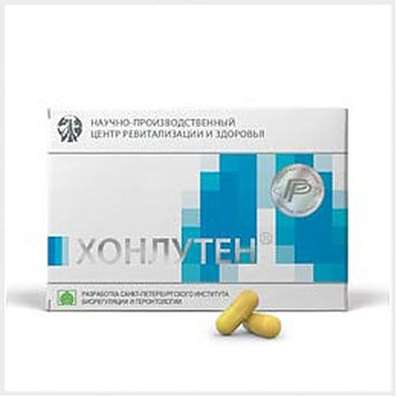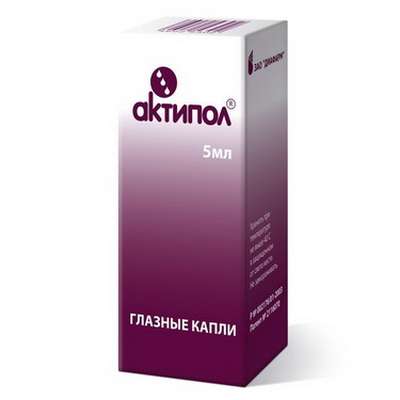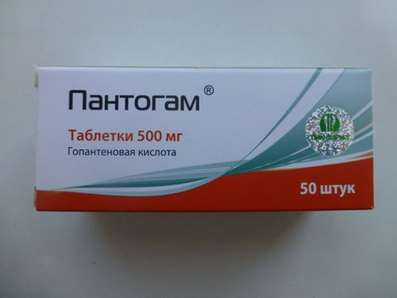Instruction for use: Protopic
I want this, give me price
Active substance: Tacrolimus
ATX code D11AH01 Tacrolimus
Pharmacological group
dermotropic means
Nosological classification (ICD-10)
L20 Atopic dermatitis
Itchy atopic eczema, Common neurodermatitis, Allergic skin diseases, Allergic skin diseases of non-infectious etiology, Allergic skin diseases of non-microbial etiology, Allergic skin diseases, Allergic skin lesions, Allergic manifestations on the skin, Allergic dermatitis, Allergic diathesis, Allergic itching dermatosis, Allergic Skin Disease, Allergic skin irritation, Dermatitis allergic, Atopic dermatitis, Dermatosis allergic, Diathesis exudative, Skin Allergic Disease, Skin allergic reaction to medicinal and chemical preparations, Skin reaction to medication, Skin and allergic disease, Acute eczema, Chronic atopic dermatitis, Exudative diathesis, Itching allergic dermatosis
Composition and form of release
Ointment for external use 100 g
active substance:
tacrolimus (in the form of tacrolimus monohydrate) 0.03 g
0.1 g
auxiliary substances: paraffin soft white; liquid paraffin; propylene carbonate; beeswax white; paraffin wax
in plastic tubes of 10, 30 or 60 g; in a pack of cardboard 1 tuba.
Description of dosage form
Ointment of a homogeneous consistency from white to slightly yellowish color.
pharmachologic effect
Pharmacological action - dermatotropic, inhibiting calcineurin.
Pharmacodynamics
Tacrolimus belongs to the group of calcineurin inhibitors. It binds to a specific cytoplasmic protein called immunophilin (FKBP12), which is a cytosolic receptor for calcineurin (FK506). As a result, a complex is formed, including tacrolimus, FKBP12, calcium, calmodulin and calcineurin, which leads to inhibition of the phosphatase activity of calcineurin. This makes it impossible to dephosphorylate and translocate the nuclear factor of activated T-cells (NFAT), which is necessary for the initiation of transcription of genes encoding the production of key cytokines (IL-2 and interferon-gamma) for the T-cell immune response. In addition, tacrolimus inhibits the transcription of genes encoding the production of such cytokines as IL-3, IL-4, IL-5, granulocyte-macrophage colony-stimulating factor (GMPCS) and TNF-α that participate in the initial stages of T-lymphocyte activation. In addition, under the influence of tacrolimus, the release of inflammatory mediators from mast cells, basophils and eosinophils, as well as a decrease in the expression of FcεRI (high affinity surface receptor for immunoglobulin E) on Langerhans cells, leads to a decrease in their activity and presentation of the antigen to T lymphocytes
Ointment tacrolimus does not affect the synthesis of collagen and thus. does not cause skin atrophy.
Pharmacokinetics
Absorption. Absorption of tacrolimus in the systemic blood stream with topical application is minimal. In most patients with atopic dermatitis (in adults and children), both with single application and with repeated application of 0.03 and 0.1% of tacrolimus ointment, its concentration in blood plasma was <1 ng / ml. Systemic absorption depends on the area of the lesion and decreases with the disappearance of clinical manifestations of atopic dermatitis. Cumulation of the drug with prolonged use (up to 1 year) in children and adults was not noted.
Distribution in the body. Due to the fact that systemic absorption of the tacrolimus ointment is low, a high ability to bind to plasma proteins (> 98.8%) is considered clinically insignificant.
Metabolism. Tacrolimus is not metabolized in the skin. When entering the systemic circulation, tacrolimus is largely metabolized in the liver by CYP3A4.
Excretion. With repeated local application of tacrolimus ointment T1 / 2 - 75 h in adults and 65 h in children.
Indications
Ointment Protopic ® is used at a dosage of 0.03% and 0.1% in adults and only 0.03% in children from 2 to 16 years old for the treatment of atopic dermatitis (moderate severity and severe forms) in case of its resistance to other external therapy or the presence of contraindications to such.
Contraindications
hypersensitivity to tacrolimus, excipients, macrolides;
pregnancy;
breast-feeding;
patients with genetic defects of the epidermal barrier, such as Netherton syndrome, as well as with generalized erythroderma due to the risk of a progressive increase in systemic absorption of tacrolimus;
children and adolescents under 16 years (at a dosage of 0.1%), children younger than 2 years (at a dosage of 0.03%).
Side effects
The most frequent adverse reactions are symptoms of skin irritation (burning sensation and itching, redness, pain, paresthesia and rash) at the application site. As a rule, they are moderately expressed and pass within the first week after the start of treatment.
Often there is intolerance to alcohol (redness of the face or symptoms of skin irritation after drinking alcohol).
Patients using Protopic ® ointment have an increased risk of developing folliculitis, acne and herpetic infection.
By frequency of occurrence undesirable reactions are divided into very frequent -> 1/10; frequent -> 1/100, <1/10 and rare -> 1/1000, <1/100. Within each group, undesirable reactions are presented in descending order of significance.
General disorders and local reactions: very frequent - burning and itching at the site of application; frequent - sensation of heat, redness, pain, irritation, rash in the area of application.
Infections: frequent - herpetic infection (herpes simplex of the face and lips, varicelliform hives of Kaposi).
Skin and subcutaneous tissue: frequent - folliculitis, itching; infrequent - acne.
Nervous system: frequent - paresthesia, hyperesthesia.
Metabolism and eating habits: frequent - alcohol intolerance (face hyperemia or symptoms of skin irritation after drinking).
During the entire period of observation of the drug, single cases of rosacea, malignization (cutaneous and other types of lymphomas, skin cancer) were recorded.
Interaction
Tacrolimus is not metabolized in the skin, which excludes the risk of drug interactions in the skin that can affect its metabolism. Since the systemic absorption of tacrolimus when used in the form of an ointment is minimal, interaction with inhibitors of CYP3A4 (erythromycin, itraconazole, ketoconazole, diltiazem, etc.) with simultaneous application with Protopyk ointment is unlikely, but can not be completely ruled out in patients with extensive lesions and / or erythroderma.
The effect of Protopic® ointment on the effectiveness of vaccination has not been studied. However, due to the potential risk of a decrease in effectiveness, vaccination should be performed before the ointment is administered or 14 days after the last use of the Protopyq ointment. If a live attenuated vaccine is used, this period should be increased to 28 days, otherwise alternative vaccines should be considered.
The possibility of joint application of Protopic® ointment with other external preparations, systemic SCS and immunosuppressants has not been studied.
Dosing and Administration
Outwardly. Adults and children over 2 years of ointment Protopic® are applied a thin layer on the affected skin areas. The drug can be used on any part of the body, including the face and neck, in the area of skin folds. Do not apply the drug to the mucous membranes and under occlusive dressings.
Use in children (2 years and older) and adolescents under 16 years
Treatment should begin with applying 0.03% ointment Protopic ® 2 times a day. The duration of treatment for this scheme should not exceed 3 weeks. In the future, the frequency of application is reduced to 1 time per day, treatment is continued until the foci of lesion are completely cleared.
Application in adults and adolescents 16 years and older
Treatment should begin with the application of 0.1% ointment Protopic ® 2 times a day and continue until complete clearance of lesions. As you improve, you can reduce the frequency of applying 0.1% of the ointment or switch to the use of 0.03% ointment Protopic ®. In case of recurrence of symptoms, resumption of treatment with 0.1% ointment Protopic® twice a day should be resumed. If the clinical picture allows, an attempt should be made to reduce the frequency of application of the drug or use a lower dosage - 0.03% ointment Protopic ®.
Use in elderly people (65 years and older)
There are no special applications for elderly people.
Usually improvement is observed within 1 week from the beginning of therapy. If signs of improvement in the background of therapy are absent within 2 weeks, consideration should be given to changing the therapeutic tactics.
Treatment of exacerbations
Ointment Protopic ® can be used for a short time or for a long time in the form of periodically repeated courses of therapy. Treatment of affected areas of the skin is carried out until the disappearance of clinical manifestations of atopic dermatitis. As a rule, improvement is observed during the first week of treatment. If signs of improvement are not observed within 2 weeks from the beginning of the use of the ointment, other options for further treatment should be considered. Treatment should be resumed with the appearance of the first signs of exacerbation of atopic dermatitis.
Prevention of exacerbations
To prevent exacerbations and increase the duration of remission in patients with frequent (more than 4 times a year) exacerbation of the disease in history, maintenance therapy with ointment Protopic® is recommended. The expediency of prescribing maintenance therapy is determined by the effectiveness of the previous treatment according to the standard schedule (2 times a day) for no more than 6 weeks.
With maintenance therapy Protectik® ointment should be applied 2 times a week (for example on Monday and Thursday) on the skin areas usually affected by exacerbations.
The time between application of the drug should be at least 2-3 days. Adults and adolescents 16 years of age and older use 0.1% ointment Protopic ®, in children (2 years and older) - 0.03% ointment Protopic ®. If signs of exacerbation appear, you should switch to the usual regimen of Protopic® ointment (see "Treatment of exacerbations").
After 12 weeks of maintenance therapy, it is necessary to assess the clinical dynamics and decide whether to continue the preventive use of the Protopyq ointment. Children should be temporarily discontinued to assess clinical dynamics and then consider whether to continue supporting therapy.
Overdose
When topical application of cases of overdose was not noted.
Treatment: In case of accidental ingestion, it is necessary to take generally accepted measures, which include monitoring of vital body functions and monitoring of the general condition.
Stimulation of vomiting or gastric lavage is not recommended.
Precautionary measures
Protopic ® is largely metabolized in the liver, and although its concentration in the blood for external use is very low, in patients with decompensated hepatic insufficiency, ointment is used with caution. Care must be taken when using Protopic ® ointment in patients with extensive skin lesions, especially long courses, and in children.
special instructions
Protopic® ointment can not be used in patients with congenital or acquired immunodeficiencies or in patients who take immunosuppressive medications.
During the application of the Protopic® ointment, sunlight, sunburn, UV-B or A therapy with psoralen (PUVA-therapy) should be avoided.
Protopic® ointment should not be used to treat lesions that are considered to be potentially malignant or pre-malignant.
For 2 hours on the skin areas on which Protopyque ointment was applied, you can not use emollients.
The efficacy and safety of the use of Protopic® ointment in the treatment of infected atopic dermatitis has not been evaluated. If signs of infection are present prior to the appointment of Protopic® ointment, appropriate therapy is necessary. The use of Protopic® ointment may be associated with an increased risk of developing a herpetic infection. In the presence of signs of herpetic infection, it is necessary to individually evaluate the relationship between the benefits and risks of using Protopica ®.
In the presence of lymphadenopathy, the patient should be examined before the start of therapy and observed during the period of application of the ointment. In the absence of an obvious cause of lymphadenopathy or in the presence of symptoms of acute infectious mononucleosis, it is necessary to stop using the Protopic ® ointment.
Avoid contact with ointment in the eyes and mucous membranes (in case of accidental ingestion, the ointment should be carefully removed and / or rinsed with water). It is not recommended to apply Protopic® ointment under occlusive dressings and wear dense, airtight clothing during treatment.
Just like when using any other local drugs, patients should wash their hands after applying the ointment, except when the ointment is applied to the area of the hands for therapeutic purposes.
Conditions of leave from pharmacies
On prescription.
Storage conditions
At a temperature of no higher than 25 ° C.
Keep out of the reach of children.
Shelf life
3 years.
Do not use after the expiry date printed on the package.

 Cart
Cart





